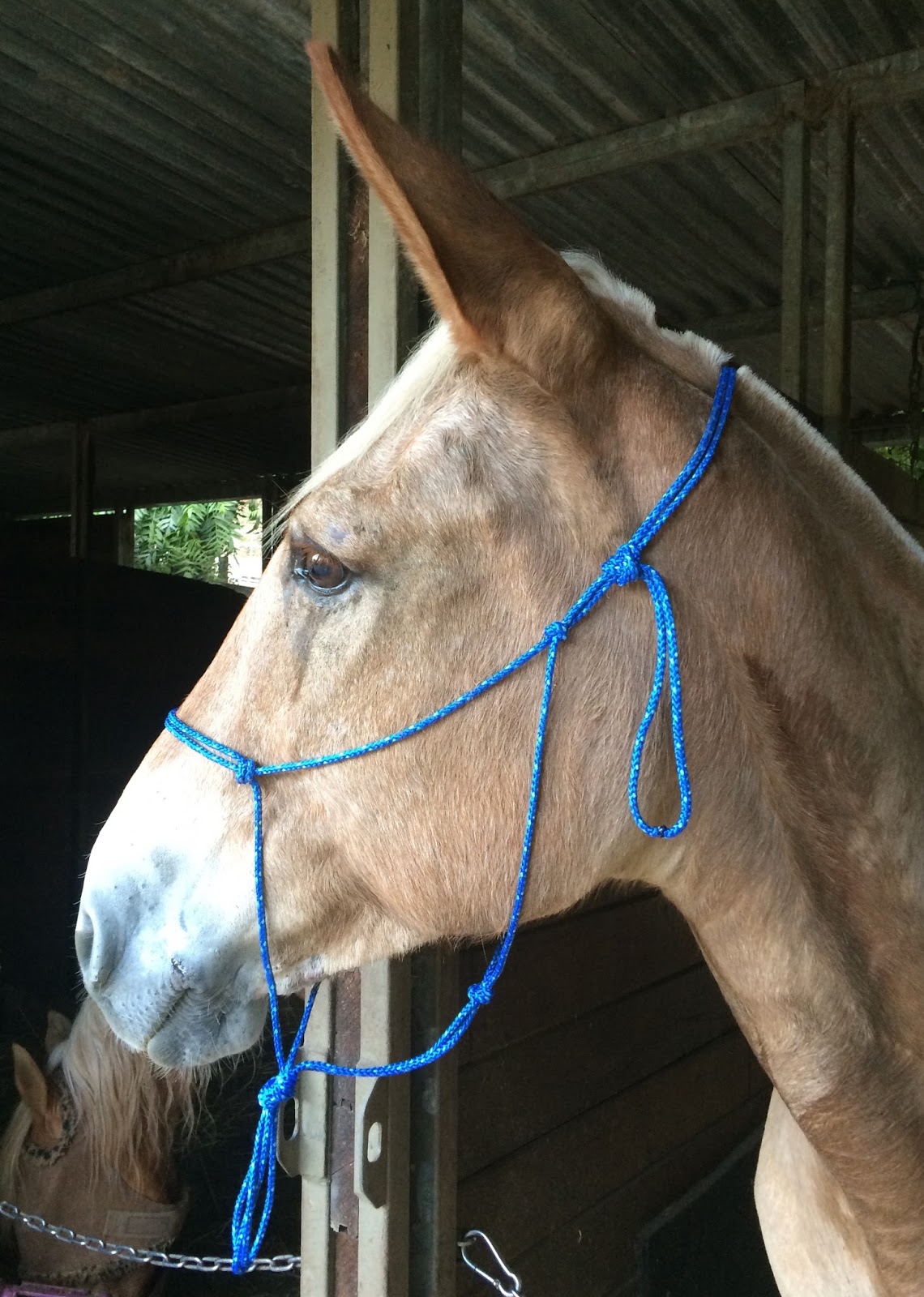Mastering the Rope Halter: A Comprehensive Guide for Horse Owners
Imagine communicating with your horse through a gentle whisper, a subtle shift in pressure that guides their movements with ease. This is the potential of the rope halter, a tool that can transform your relationship with your equine companion. But understanding its proper application is key to unlocking its benefits and avoiding potential misuse.
This comprehensive guide delves into the intricacies of rope halter usage, from its historical origins to modern-day best practices. We'll explore the nuanced techniques that allow for clear communication, building trust and respect between horse and handler. Whether you're a seasoned equestrian or a novice horse owner, this guide offers valuable insights into mastering this versatile piece of equipment.
Unlike traditional halters, which rely on broad straps and buckles, the rope halter operates on the principle of focused pressure. Its thin, flexible construction allows for precise cues, making it an effective tool for groundwork, training, and even riding. But this sensitivity also demands a gentle and knowledgeable hand. Misuse can lead to discomfort or even injury for the horse.
The rope halter's effectiveness lies in its ability to amplify subtle movements, translating them into clear signals for the horse. By understanding the pressure points and release mechanisms, you can guide your horse with precision and finesse. This allows for more refined communication, facilitating training and strengthening the bond between you and your animal.
The history of rope halters is intertwined with the development of horsemanship practices that prioritize communication and partnership. Originating from traditional vaquero traditions, these halters have evolved alongside our understanding of equine behavior. Today, they are widely used across various disciplines, from natural horsemanship to competitive riding, highlighting their versatility and effectiveness.
Putting a rope halter on a horse involves carefully placing the noseband over the horse's nose, ensuring the knot is situated under the jaw. The lead rope is then attached to the loop created by the knot. Adjusting the halter involves sliding the knots to achieve a snug but not tight fit. The halter should sit high enough on the nose to avoid interfering with the horse's breathing.
One benefit of using a rope halter is enhanced communication. The direct pressure and release system allows for clear and immediate feedback, facilitating training and groundwork exercises. Another benefit is improved responsiveness. Horses tend to be more sensitive to the cues given with a rope halter, leading to finer control and quicker responses. Lastly, rope halters offer greater control, especially in challenging situations. The focused pressure can be more effective in redirecting a horse's attention and preventing unwanted behaviors.
A step-by-step guide for using a rope halter involves: 1) Approaching the horse calmly and confidently. 2) Gently placing the halter on the horse's nose. 3) Securing the knot under the jaw. 4) Attaching the lead rope. 5) Applying gentle pressure for desired movements. 6) Releasing pressure as a reward.
Advantages and Disadvantages of Rope Halters
| Advantages | Disadvantages |
|---|---|
| Enhanced communication | Potential for misuse and injury |
| Improved responsiveness | Requires a knowledgeable handler |
| Greater control | Not suitable for tying |
Best Practices: 1) Use gentle pressure. 2) Release pressure immediately upon the desired response. 3) Avoid jerking or pulling on the lead rope. 4) Ensure proper fit. 5) Educate yourself on proper usage before using a rope halter.
FAQs: 1) Q: Can I tie my horse with a rope halter? A: No, rope halters can cause serious injury if a horse pulls back while tied. 2) Q: How do I adjust the fit of a rope halter? A: Adjust the knots to ensure a snug but comfortable fit. 3) Q: Are rope halters suitable for all horses? A: Generally, yes, but caution should be exercised with young or sensitive horses. 4) Q: How do I introduce my horse to a rope halter? A: Start slowly and patiently, allowing your horse to get accustomed to the feel of the halter. 5) Q: Where can I learn more about using a rope halter? A: Consult with a qualified horse trainer or search for reputable online resources. 6) Q: Are there different types of rope halters? A: Yes, they vary in material, construction, and knotting patterns. 7) Q: Can I use a rope halter for riding? A: Yes, with proper training and caution. 8) Q: What are the signs of a poorly fitting rope halter? A: Rub marks, chafing, or excessive pressure points.
Tips and Tricks: Observe experienced horse handlers, practice proper knot tying, and prioritize your horse's comfort and safety.
Mastering the art of using a rope halter empowers you to communicate with your horse on a deeper level. This gentle yet effective tool can transform your groundwork, training, and overall partnership with your equine companion. By understanding its proper application, embracing best practices, and prioritizing your horse's well-being, you unlock the potential for a more harmonious and connected riding experience. Remember, patience, consistency, and a gentle hand are key to effectively utilizing the rope halter and fostering a trusting bond with your horse. Take the time to educate yourself, practice diligently, and seek guidance from experienced horsemen when needed. The rewards of clear communication and a strengthened partnership will be well worth the effort.
Tpg pay by refund
Unleash the beast chevy silverado 3500 diesel towing power
Find your dream dress vestidos de quinceanera near me














